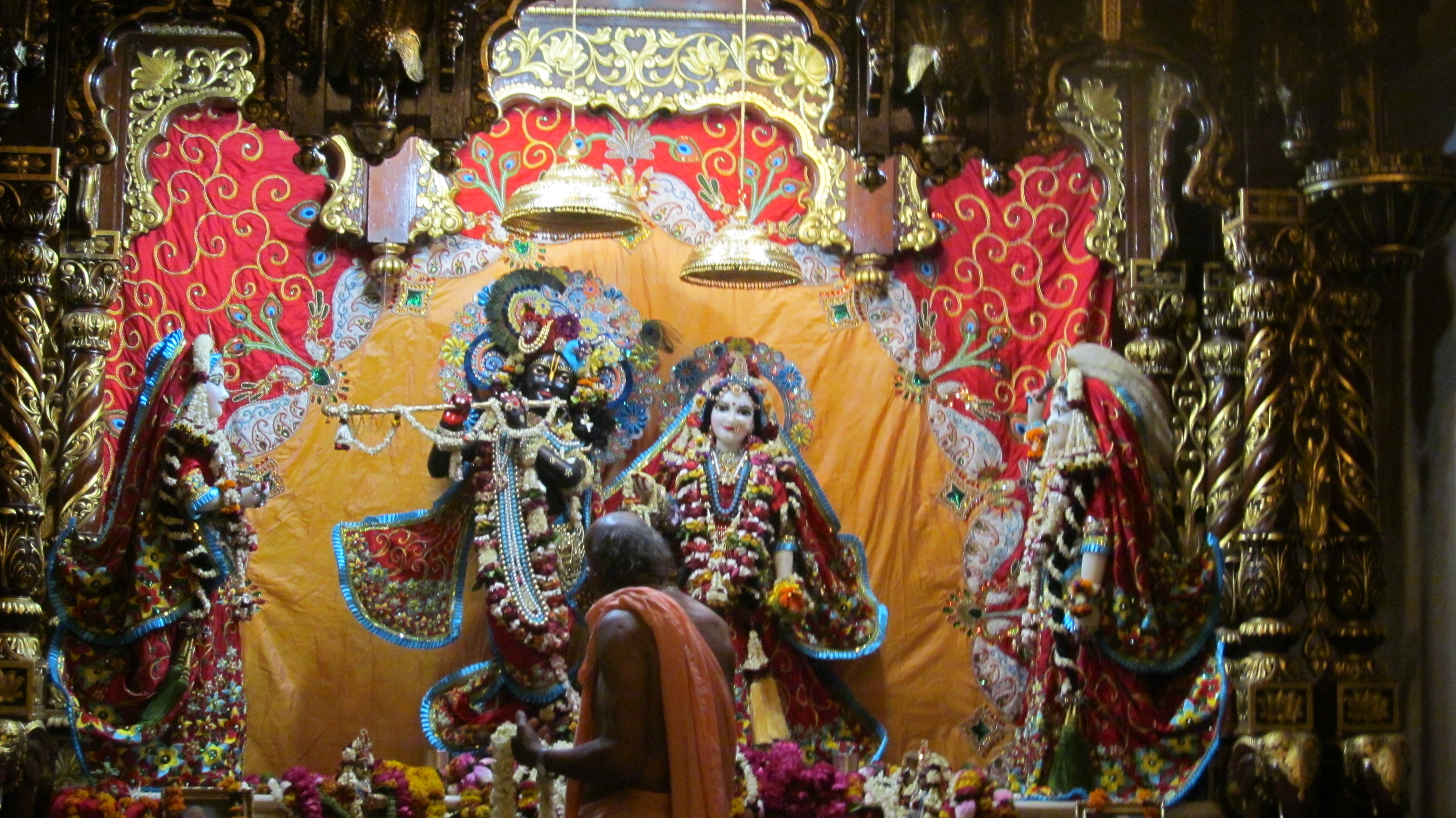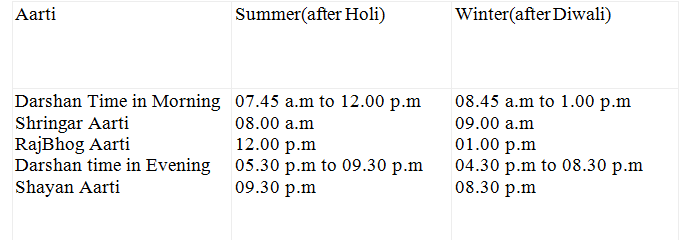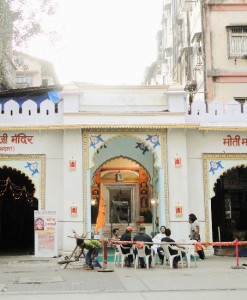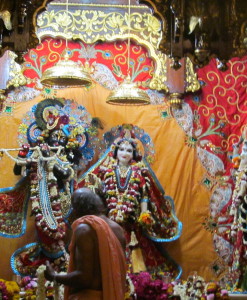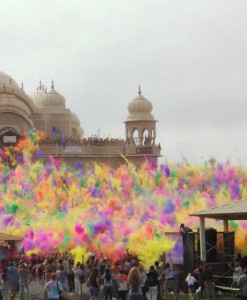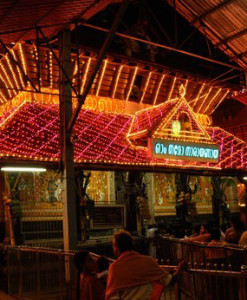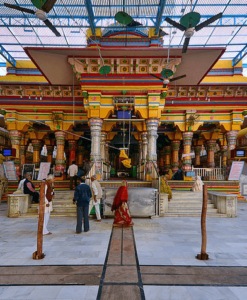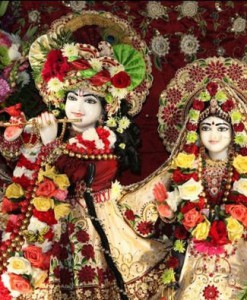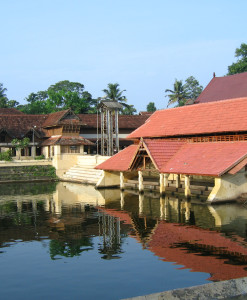No products in the cart.
Bankey Bihari Temple, Vrindavan
The Bankey Bihari Temple, Vrindavan is amongst the holiest and one of the most famous temples of Krishna in India. Shri Swami Haridas was instrumental in establishing Bankey Bihari in Nidhivan. The idol of Thakur Ji is extremely old and was worshipped in Nidhivan till 1863. The Bankey Bihari Temple was constructed in 1864 with the contribution of Goswamis. After construction of the temple, Goswamis transferred the idol to this temple. Bankey means “Bent at three places” and Bihari means “Supreme enjoyer”. Bankey bihari ji is worshiped and looked after as a child. There is a different and unique style of celebrating every festival in Bankey bihari temple. The deity is dressed up and offered cuisine (bhog, prasad) according to season. Temple is decorated with lights and various types of flower according to festival. There are no bells or conch in the temple because Bankey Bihari does not like the sound of bells or conch. there is only chant of ‘radha naam’. When someone enters in the temple, he feels an eternal bliss and calm and forgets all misery. As soon as someone meets with Thakur ji, he becomes dedicating himself to Thakur ji. Kind hearted Thakur ji demolish his problem and bless him with His divine grace how far he is.
The image of Bihariji installed in the The Bankey Bihari Temple, is the one granted to Swami Haridas by the celestial couple Shyama-Shyam themselves. Submitting to the desire of devotees, The Lord appeared in person with his divine consort and left back a black charming image before disappearing.
Swami Haridas ji was born to Shri Ashudhir and his wife Smt Gangadevi on the day of Radha Ashtami i.e. eighth day of second (bright) fortnight of Bhadrapad month of the year 1535 Vikrami(1478 A.D.). He was born in a small village, now known as Haridaspur, near Aligarh in Uttar Pradesh. The linage of the family can be traced back to Shri Gargacharya. Shri Gargachrya was the kulguru (family guru) of Yadavs and visited Brij secretly for conducting the Namkaran Samskar (naming ceremony) of young Krishna and Balram on request of Sri Vasudev. A branch of the family migrated to Multan (now in Pakistan), but some of them returned after a long time. Sri Ashudhir was one such migrant who after returning from Multan settled at the outskirts of Brij, near Aligarh.
Swami Haridas was the reincarnation of Lalita ‘sakhi’ (female friend), of the inner consortium of Lord Krishna. This easily explains the fact that even in his childhood; he was more into meditation and scriptures, while other children of his age were busy playing. He was married at the suitable age according to the time to Harimati. Even after his marriage, young Haridas stayed away from worldly pleasures and concentrated on meditation. Harimatiji was such a saintly soul herself that on realizing the inclination of her husband, she prayed intensely and was bodily transported to the heavenly abode of Lord by entering the flame of a small lamp in the presence of Haridas. No physical remains were left behind!
Soon after that Haridas left his village for Vrindavan, which was a dense forest at that time and chose a secluded spot, which is now known as Nidhivan, to practice his music and to enjoy eternal bliss of meditation. He constantly and continuously meditated on Nitya Ras and Nitya Bihar of Lord at Nitya Vrindavan. His way of Sadhna was to compose and sing songs in the praise of Lord. While on earth, living in a mortal state, he facilitated his regular unobstructed entry in the Nitya Bihar and always enjoyed the pleasure of closeness of Lord. He chose a secluded and densely forested area, Kunj, in Nidhivan as his gateway to the nirvana and was mostly sitting there, singing, meditating and surfing in the ocean of eternal bliss.
His disciples were curious about this place and one day with permission of Swamiji, they all entered the kunj. But instead of seeing anything they were almost blinded by bright, intense light, which seemed to fill the whole place. On knowing of their plight Swamiji himself went there, and then after his requests, lord appeared in person with his divine consort, pleasantly smiling and in a playful mood and casting a spell of charm on every living being present there. Those who witnessed this, were so spell bounded by the beauty of the Lord and his consort, that they couldn’t even blink their eyes, it seemed that all of them had turned into stone statues.
The legend as handed down to the generations of Goswamis, says that the beauty of the divine couple was such that no one wanted to loose the sight and proximity of divinity, but then what kind of divinity is it, which cannot make a mere mortal swoon and charmed enough to forget and give up the world and its luxuries? The beauty of the divine couple was so much that lesser mortals, like you and me, won’t be able to bear such a heavenly beauty. Sensing this Swami Haridasji requested both of them to take a single form, as the world won’t be able to bear their image. He requested them to take a single form like Ghan(cloud) and Damini(lightning) thus giving a perfect metaphor to the combined beauty of dark Lord and his fair consort, Radhaji.
Bihari Ji & Haridas Ji also wanted his beloved lord to be in front of his eyes always. Granting him his both wishes, the couple turned itself into one single black charming idol, the same one that you see in the temple today. The charm and beauty of Shri Banke Bihariji is the only reason why the ‘darshan’ in the temple is never continuous but is broken by the curtain drawn on him regularly. It is also said that if one stares long enough into the eyes of Shri Banke Bihariji, the person would lose his self consciousness.
Bankey Bihari Temple is the prime attraction and the highly revered shrine of Vrindavan. In Uttar Pradesh, Vrindavan is a small town that is celebrated for this holy shrine of Lord Krishna. Banke Bihari Mandir is the popular temple amongst the Vaishnavites of India. The present temple was built by Swami Haridas in 1864. Here, Lord Krishna is observed in his phase of childhood. The services offered to the Lord are made in such style, as if, nurturing a small child.
In the phrase Bankey Bihari, the term ‘Bankey’ suggests ‘bent at three places’ and ‘Bihari refers ‘the Supreme enjoyer’. Thus, Bankey Bihari is the benefactor of bliss and pleasure. Lord Bankey Bihari is also known Thakurji, the owner of everything. The black wooden idol of Bankey Bihariji was brought in this temple from Nidhivan by Swami Haridas. The services made to deity is regarded as the ‘sewa’ of the deity. At that time, Swami Haridas tendered the ‘sewa’ of Bihariji to Goswami Jagannath.
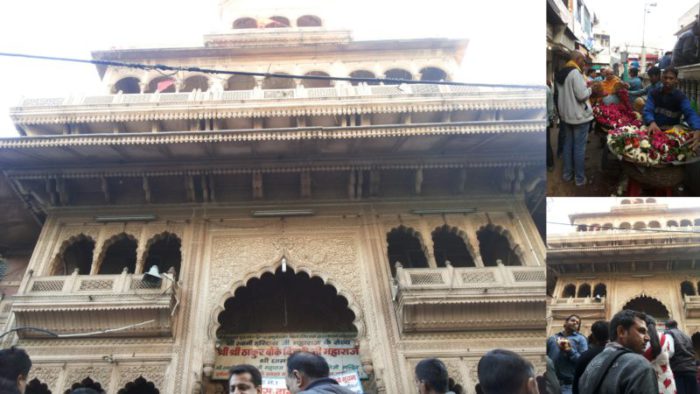
Ever since, the ‘sewa’ of Bihariji is performed by the descendants of Goswami. Unlike other temples of the Hindus, this temple doesn’t observe the ‘Mangal Aarti’ that is a kind of wishing good morning to the Lord because the child sleeps till late in the morning. Bihariji is worshipped in a different way, classifying the services into three parts, Shringar, Rajbhog and Shayan respectively. During Shringar, the lord is bathed, dressed and decorated with jewelry.
In the forenoon, Thakurji is offered Rajbhog, which is a feast including the best delicacies to satisfy the taste buds of the child. The third sewa is known as ‘Shayan’ and in this service; Bankey Bihari is made to sleep. This temple opens late in the morning because it is considered that the lord plays at night and gets up late. The divine aura of the shrine makes one to forget all his/her miseries and bestows the eternal bliss.
Another attraction of the Bankey Bihari Temple is that the deity is clothed and offered food as per the season and occasion. During the months of ‘Saawan’ (monsoons), the temple is decorated with flowers and lights. This decoration of temple is called as ‘Bangla’ that suggests bungalow of the Lord. The temple doesn’t comprise any bell or conch because the sound disturbs Bihariji.
Bankey Bihari Temple has many features that are unique in their own way. Bankey Bihari has a kind of magnetic appeal in his eyes and to prevent the attraction, a curtain is made after every 1 minute. The charisma of the Lord is really strong and it is believed that, if one stares into the eyes the God for a long time, the individual would lose his self-consciousness.
The only thing that is common throughout the temple is the chant of ‘radhe radhe’. The Lord loves the name of ‘Radha’ that is why the shrine is always reverberated with the chant. The structure of the temple is imbibed from the Rajasthani style of architecture. Even after 150 years, the temple has not lost its charm. In fact, thousands of devotees come to visit this temple everyday.
By Road : Vrindavan is situated on Delhi-Agra NH-2. the various buses runs between the Agra and Delhi. temple is 7 km. away from National Highway. Getting to Temple is very easy as there are frequent tempos and rickshaw available throughout the day. Mathura is just 12 km away. frequent buses, tempos and taxies runs between Mathura and Vrindavan.
By Train : The major railway station nearby is Mathura on the Delhi-Chennai and Delhi-Mumbai main line. Several express and passenger trains connect Mathura from other major cities of India like Delhi, Mumbai, Pune, Chennai, Bangalore, Hyderabad, Calcutta, Gwalior, Dehradun, Indore, and Agra. Though Vrindavan itself is a railway station. A rail bus runs between Vrindavan and Mathura 5 round in a day.
By Air : The nearest airport is Agra just 67 km away from Vrindavan. The nearest international airport is Delhi, which is connected to almost every important city in the world with major airlines. There are regular flights to other important tourist destinations of India such as Delhi, Mumbai, Bangalore, and Chennai etc.
Bankey Bihari Temple, Vrindavan
The sewa of the Bihariji is unique in its own way. It is performed in three parts every day ie Shringar, Rajbhog and Shayan. While shringar (which includes bath, dressing and adornment with jewellery like crown and necklaces) and Rajbhog(feast) is offered in the forenoon, Shayan Sewa (shayan means sleep) is offered in the evening. The temple doesn’t have a tradition of Mangala (early morning) sewa. Swami Haridas did not favour Mangla Sewa as he wanted his child like Lord to take complete rest and did not want to disturb him out of deep slumber so early in the morning.
So, the temple today stands with its full glory, inside which the Lord himself resides. It is thronged by thousands of visitor’s everyday.

